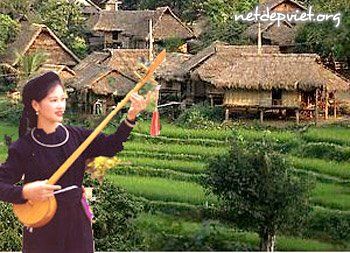|
|
Hát then là một thể loại ca nhạc tín ngưỡng của người Tày, Nùng. Mang trường ca, mang màu sắc tín ngưỡng thuật lại cuộc hành trình lên thiên giới để cầu xin Ngọc hoàng giải quyết một vấn đề gì đó cho gia chủ.
Then cổ là then nghi lễ hát đệm trong các buổi lễ để cầu phúc, chúc thọ ông bà... Nghệ nhân Then cổ cũng chính là những bà thầy nên toàn là người già, có trẻ cũng phải trên 40 tuổi. Mà người làm Then cổ chủ yếu là phụ nữ, đàn ông có làm cũng rất hiếm hoi mà vẫn gọi là chị, mặc đồ của nữ, quàng khăn như các bà khi cúng tế...
Âm nhạc là yếu tố xuyên suốt cuộc hát then. Hát then có nhiều bài bản, làn điệu. Người Tày, người Nùng không kể tuổi tác, giới tính, những người mê tín cũng như không mê tín rất thích nghe hát then. Một vài tộc khác như người Mông, Việt ở trong vùng cũng tiếp nhận thể loại hát này trong đời sống tinh thần của mình.
Lời hát theo hình thức diễn xướng tổng hợp ca nhạc Đàn tính, múa, diễn với nhiều tình huống khác nhau. Đảm nhiệm chức năng của một diễn viên tổng hợp. Họ vừa hát, tự đệm, vừa múa và diễn để thể hiện nội dung câu hát, đôi khi còn biểu diễn cả những trò nhai chén, dựng trứng, dựng gươm...
"Hat then" are religious epics of Long Poems, performed by the highland Tay and Nung minority groups. Those songs tell the story of the path to paradise to ask the Jade Emperor to settle troubles for the head of household.

"Hat then" performances are important ceremonial events, which unite the entire community. Long Poems consist of several chapters with different content lengths. A show usually involves two or three groups of singers, plus musicians. The epics last for hours and are devided into short and long chapters, which are often repetitive. Anyone planning to sit through a "hat then" ritual had best get comfortable; the longest epic contains 35 chapters and 4,949 lines. In the ceremony procession, not only must the artist carry out elaborate religious rituals, but also act as a general actor singing, playing music, dancing, and making gestures to demonstrate the meaning of the sentence he is singing. Sometimes the artist also performs other activities such as chewing cups and other things. Music is the main element that completely penetrates the performance. Sometimes the music is accompanied with song, and at other moments it serves as a background for dance or connecting parts of a song.The main musical instruments in the "Then" performance is the "Tin Tau" (a traditional stringed musical instrument resembling a guitar) and a chain of shaking instruments. Sometimes the band has a bell present. All people in the Tay Nung community, regardless of ages, sexes, and religions are fond of "Then" songs. Some groups such as the Kinh Mooing in the same region have also been incorporating this kind of art in their spiritual lives. |
|